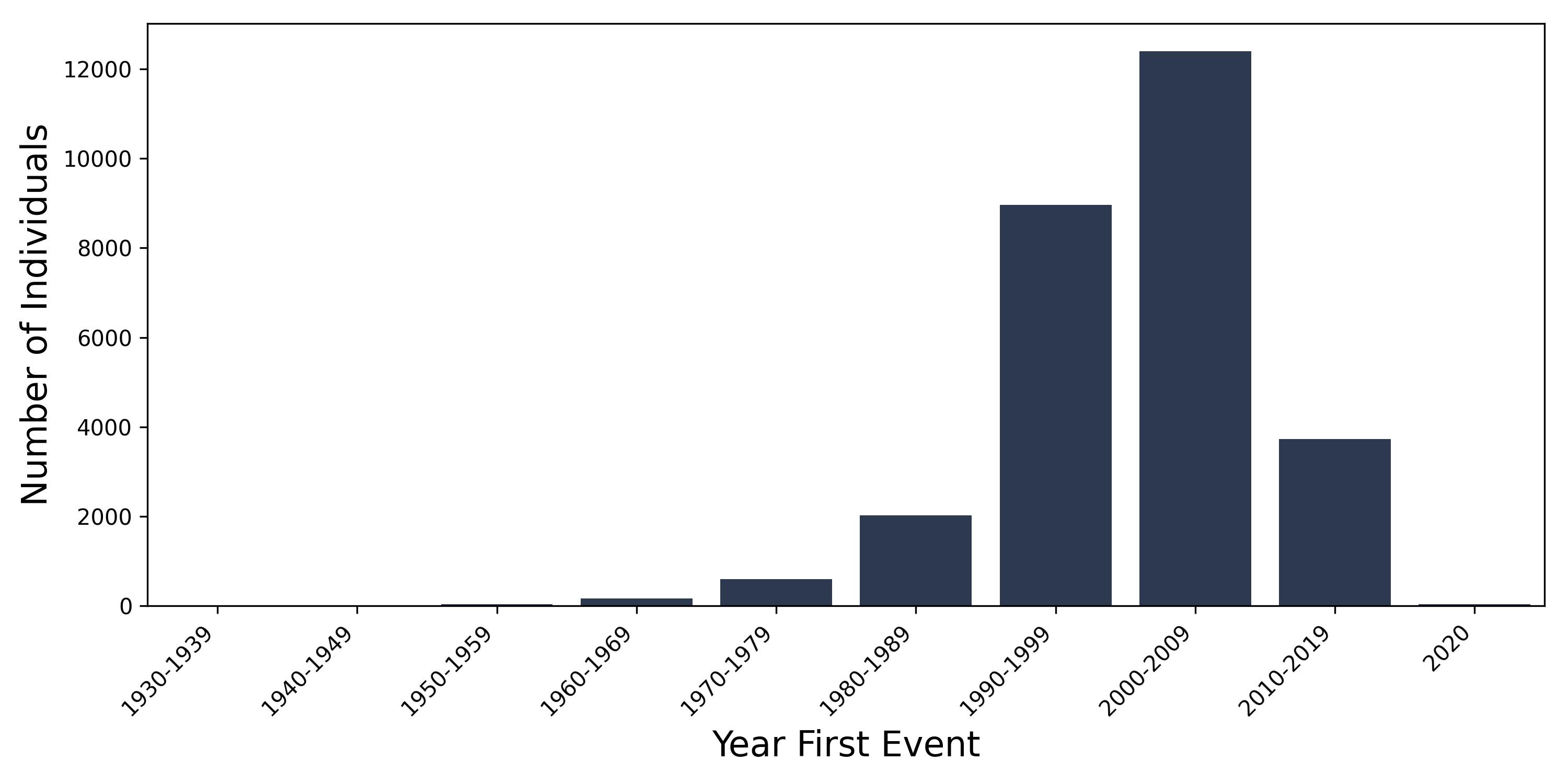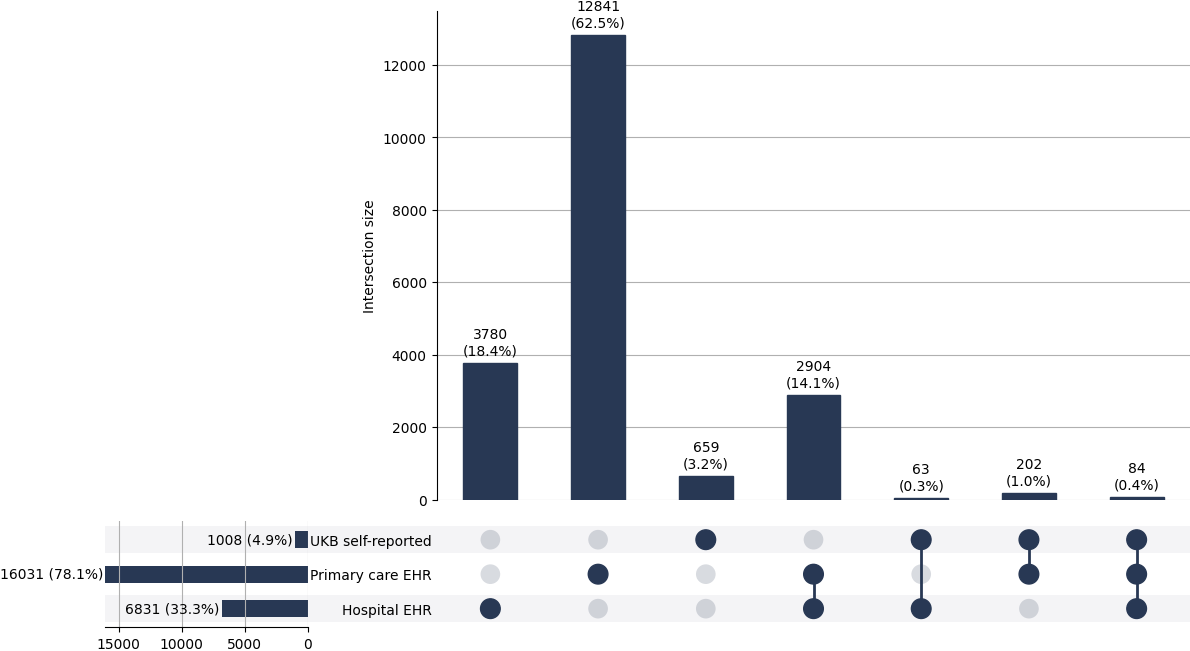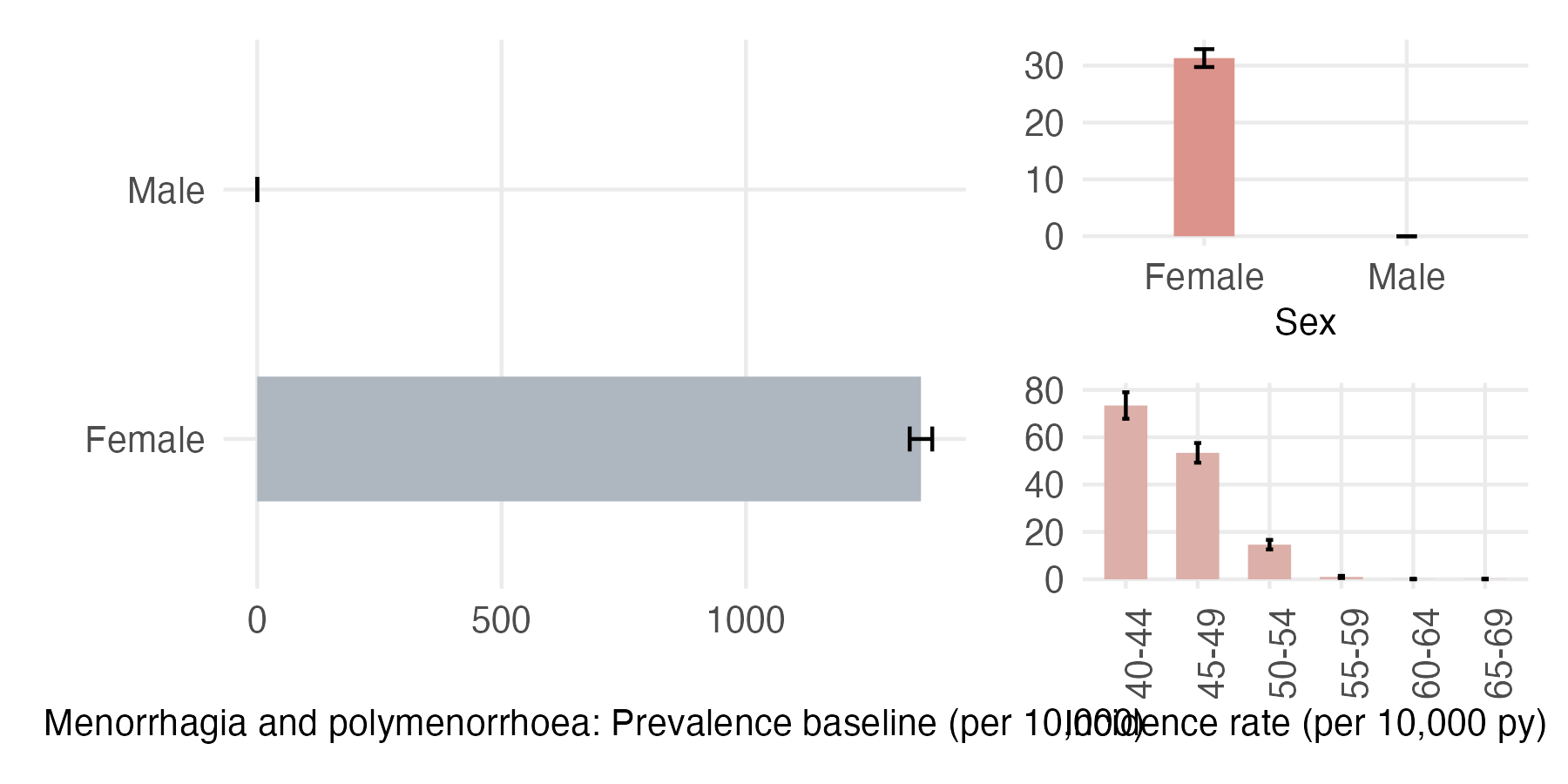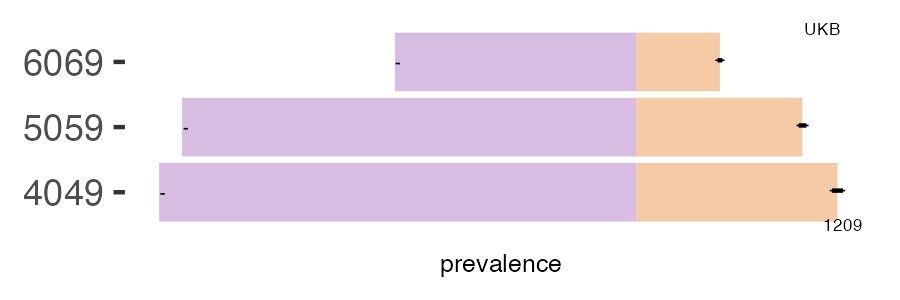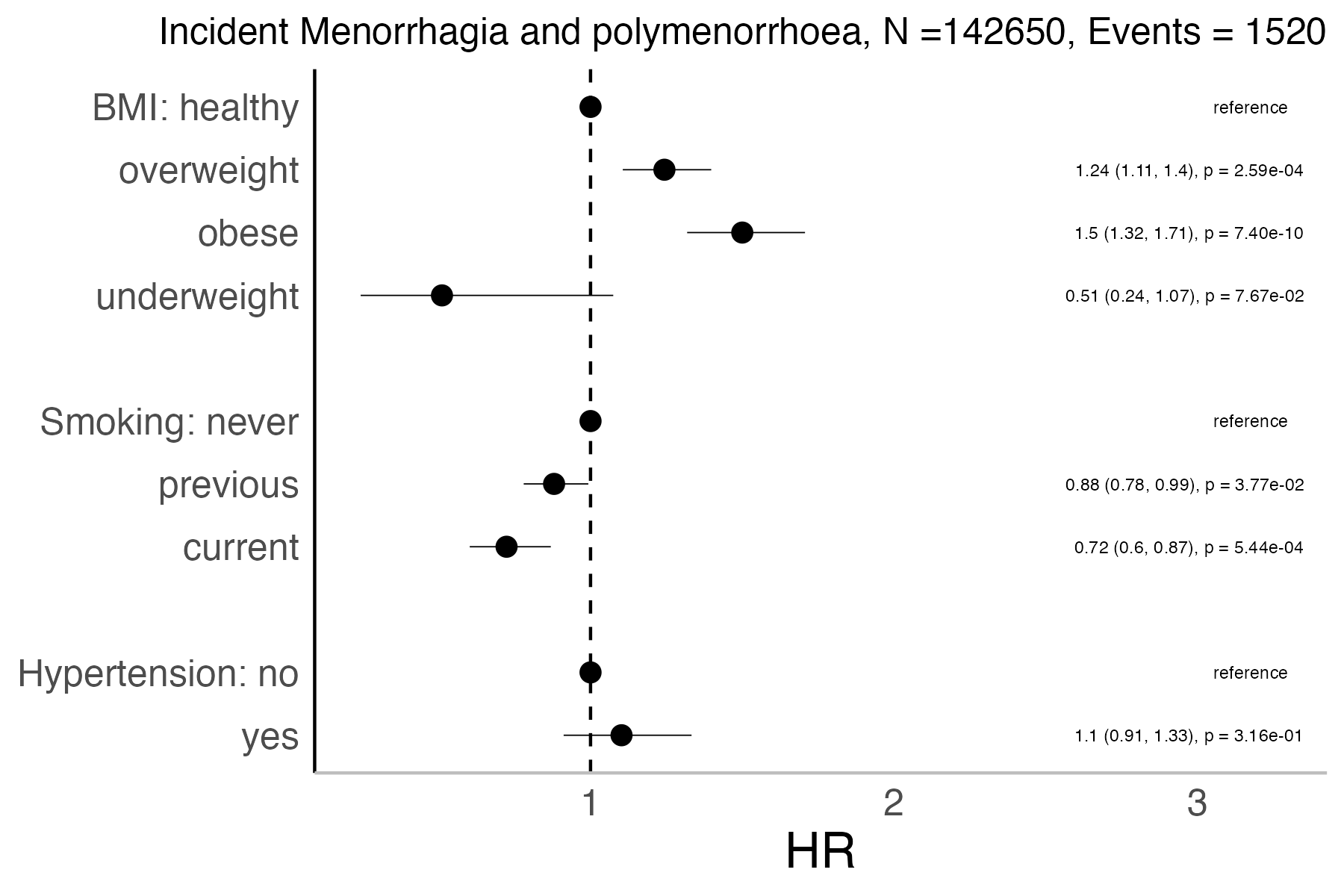| 20002 |
Non-cancer illness code, self-reported |
1556 |
menorrhagia (unknown cause) |
| 41202 |
Diagnoses - main ICD10 |
N92.0 |
Excessive and frequent menstruation with regular cycle |
| 41202 |
Diagnoses - main ICD10 |
N92.1 |
Excessive and frequent menstruation with irregular cycle |
| 41202 |
Diagnoses - main ICD10 |
N92.2 |
Excessive menstruation at puberty |
| 41202 |
Diagnoses - main ICD10 |
N92.4 |
Excessive bleeding in the premenopausal period |
| 41204 |
Diagnoses - secondary ICD10 |
N92.0 |
Excessive and frequent menstruation with regular cycle |
| 41204 |
Diagnoses - secondary ICD10 |
N92.1 |
Excessive and frequent menstruation with irregular cycle |
| 41204 |
Diagnoses - secondary ICD10 |
N92.2 |
Excessive menstruation at puberty |
| 41204 |
Diagnoses - secondary ICD10 |
N92.4 |
Excessive bleeding in the premenopausal period |
| 40001 |
Underlying (primary) cause of death: ICD10 |
N92.0 |
Excessive and frequent menstruation with regular cycle |
| 40001 |
Underlying (primary) cause of death: ICD10 |
N92.1 |
Excessive and frequent menstruation with irregular cycle |
| 40001 |
Underlying (primary) cause of death: ICD10 |
N92.2 |
Excessive menstruation at puberty |
| 40001 |
Underlying (primary) cause of death: ICD10 |
N92.4 |
Excessive bleeding in the premenopausal period |
| 40002 |
Contributory (secondary) causes of death: ICD10 |
N92.0 |
Excessive and frequent menstruation with regular cycle |
| 40002 |
Contributory (secondary) causes of death: ICD10 |
N92.1 |
Excessive and frequent menstruation with irregular cycle |
| 40002 |
Contributory (secondary) causes of death: ICD10 |
N92.2 |
Excessive menstruation at puberty |
| 40002 |
Contributory (secondary) causes of death: ICD10 |
N92.4 |
Excessive bleeding in the premenopausal period |
| 42040 |
GP clinical event records |
151G.00 |
Length of cycle decreasing |
| 42040 |
GP clinical event records |
1572.00 |
H/O: polymenorrhoea |
| 42040 |
GP clinical event records |
1573.00 |
H/O: menorrhagia |
| 42040 |
GP clinical event records |
1573.11 |
H/O: heavy periods |
| 42040 |
GP clinical event records |
K592000 |
Menorrhagia |
| 42040 |
GP clinical event records |
K592011 |
Heavy periods |
| 42040 |
GP clinical event records |
K592012 |
Heavy menstrual bleeding |
| 42040 |
GP clinical event records |
K592100 |
Polymenorrhoea |
| 42040 |
GP clinical event records |
K592111 |
Epimenorrhoea |
| 42040 |
GP clinical event records |
K592.00 |
Excessive or frequent menstruation |
| 42040 |
GP clinical event records |
K592.11 |
Frequent menses |
| 42040 |
GP clinical event records |
K592.12 |
Hypermenorrhoea |
| 42040 |
GP clinical event records |
K592z00 |
Excessive or frequent menstruation NOS |
| 42040 |
GP clinical event records |
K593.11 |
Pubertal bleeding and menorrhagia |
| 42040 |
GP clinical event records |
K5A0.00 |
Premenopausal menorrhagia |
| 42040 |
GP clinical event records |
K5A0.11 |
Climacteric menorrhagia |
| 42040 |
GP clinical event records |
K5A6.00 |
Perimenopausal menorrhagia |
| 42040 |
GP clinical event records |
XE0ep |
Puberty bleeding |
| 42040 |
GP clinical event records |
Xa9CP |
Perimenopausal menorrhagia |
| 42040 |
GP clinical event records |
XE0ew |
Premenopausal menorrhagia |
